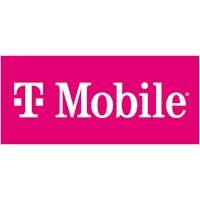The digital divide has long been a simmering problem facing millions of students that took a global pandemic to bring to a boil. At the time, nearly 16 million students in the United States lacked home internet access, according to a widely cited report from Common Sense Media. Despite incremental progress made to narrow the digital divide, students’ success today hinges on having access to a connected device and high-speed internet in the classroom and at home.
The pandemic highlighted the disparities in internet access among students from different socioeconomic backgrounds and the urgent need to address these inequalities. It also sparked a broader conversation about the importance of digital equity and the need for universal access to technology and the internet. These two realities increased momentum and focus on initiatives to bridge the digital divide — initiatives like Project 10Million.
In 2020, T-Mobile launched Project 10Million, a $10.7 billion commitment to bridge the digital divide by providing free internet and Wi-Fi hotspots for five years to disadvantaged K-12 students. Today, over 5.3 million students nationwide are connected to high-speed internet through their schools and at home.
While the program offers families 100GB of data each year for five years, T-Mobile recognized that school districts similarly need connectivity solutions to ensure their student’s success in the classroom.
T-Mobile partners with school districts to identify pathways to sustainable and scalable technology and connectivity planning. The suite of solutions and resources includes:
- T-Mobile K-12 device and connectivity contributions
- Experienced K-12 industry advisors for strategic planning, guidance on device adoption and developing student outcome measures
- Dedicated implementation managers for distribution planning and on-site deployment execution
- Staging, kitting, labeling, asset tagging and shipping resources and
- Fully funded education grade content filtering.
School districts like Kansas City Public Schools, for example, are providing cellular-enabled iPads as an alternative to their traditional Wi-Fi-only model. “Technology proficiency becomes essential for future success, and connected devices empower students to navigate the modern workplace,” said Dr. Judith Campbell, deputy superintendent of schools. “By embracing technology as an educational tool, students become active creators, collaborators and problem solvers, enhancing their ability to adapt to a rapidly evolving world.”
In Kentucky, Jefferson County Public Schools recognized the need to leverage this disruption by reimagining student connectivity and devices as an outcome-driven, district-wide initiative instead of a pandemic response.
“A critical part of innovation is our ability to identify and provide the tools that will allow students to create, learn and thrive anytime, anywhere,” explained Kermit Belcher, assistant superintendent and chief information officer. “Providing connected devices for students removes barriers and supports the extended school day needs for our most vulnerable families.”
Learn more about Project 10Million and how to apply.
In a Department of Education Office of Educational Technology blog post about the digital divide, authors found that “about six million learners and three million households currently face adoption barriers beyond availability and affordability.” The authors note that technical approaches, such as distributing devices and subsidizing internet subscription costs, are essential to solving the digital divide.
Yet, what my team and I find at T-Mobile is that device and connectivity adoption beyond the traditional school day requires strategic planning and an integrated device model that allows for the seamless use of both the device and the connectivity. Communication, training, software program resources, accountability models and parental engagement are all part of the adoption conversation and planning.
At the same time as we are seeing the digital divide continue to narrow, education professionals are prioritizing technology as an essential tool for holistic student development. For educators, this means reimagining the role of curriculum and instruction with technology equity and access in mind. Technology is an irreplaceable resource that continues to open new avenues for learning and engagement. There is a sense of urgency by policymakers and many others to ensure students (and school districts) have equitable access to technology and connected devices.
Economies worldwide are adapting as quickly as possible to the pace and scale of technological change and reliance on connectivity to meet the realities of today and the possibilities of tomorrow. Yet, the digital divide remains a stubborn problem. And if not addressed adequately, the consequences may be profound. Students' success in the classroom — and preparation to eventually enter an advanced workforce — hinges, in part, on having unfettered access to digital and technology-based resources. T-Mobile's Project 10Million is one important part of this solution.



